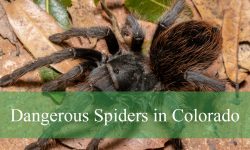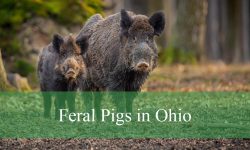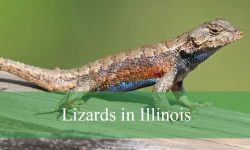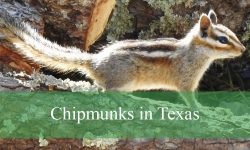Across the state of Ohio, large, dark birds can often be seen circling high above fields, forests, and highways. These scavengers play an important role in the natural world by feeding on carrion, which helps keep ecosystems clean and reduces the spread of disease. Among these aerial recyclers, vultures stand out as some of the most efficient and fascinating birds to observe.
In Ohio, two species of vultures are regularly present: the Turkey Vulture and the Black Vulture. The Turkey Vulture has long been a familiar sight across the state, while the Black Vulture has expanded northward from the southern U.S. and is now firmly established in southern Ohio, with sightings becoming more frequent in central and even northern counties.
This guide will explore the two types of vultures found in Ohio, covering their characteristics, behaviors, habitats, and tips for identification.
Turkey Vulture in Ohio

Appearance and Key Identification Features
The Turkey Vulture (Cathartes aura) is Ohio’s most familiar scavenger bird, easily recognizable by its large size and soaring flight. Adults have a wingspan that can reach nearly six feet, making them one of the largest birds regularly seen in the state. Their plumage is predominantly dark brown to black, but when viewed from below during flight, the primary flight feathers have a lighter, silvery-gray tone that contrasts sharply with the darker body, creating a striking silhouette against the sky.
The adult’s bare red head is another distinguishing feature, while juveniles sport a muted grayish head until they reach maturity. Their eyes are dark and keen, scanning the ground for potential food sources. On the ground, the pale, hooked beak is highly specialized, allowing them to efficiently tear through tough hides and access carrion, a crucial adaptation for a scavenger.
In flight, Turkey Vultures are graceful and deliberate. They hold their wings in a slight V-shape, a posture known as a dihedral, and often rock gently from side to side while riding thermal currents. Unlike most raptors, they rarely flap, conserving energy as they glide for long periods in search of food.
Behavior and Diet
Turkey Vultures are obligate scavengers, meaning they feed almost exclusively on carrion and generally avoid hunting live prey. What sets them apart from many birds is their remarkable sense of smell—one of the few among birds—which allows them to detect gases released by decaying animals. This olfactory ability enables them to locate hidden carcasses, even under forest canopies or thick vegetation.
By feeding on dead animals, Turkey Vultures provide a critical service to Ohio’s ecosystems. They help reduce the spread of pathogens such as bacteria and viruses that could otherwise pose risks to wildlife, livestock, and humans. Despite their sometimes grim reputation, these birds are indispensable natural cleaners.
Socially, Turkey Vultures can be observed in small groups, especially around abundant food sources, though they are less aggressive than Black Vultures. They are most active during the day and often take advantage of rising thermals in the late morning and early afternoon to soar efficiently.
Habitat and Distribution in Ohio
Turkey Vultures are widespread across Ohio during the warmer months, inhabiting a wide variety of environments. Open farmlands, forest edges, river valleys, and even suburban areas are commonly used habitats. They are often seen circling over highways and rural roads where roadkill provides an easy meal.
These birds arrive in Ohio as early as March, making them among the first returning raptors of spring. By late spring and summer, they are abundant throughout the state. As fall approaches and temperatures drop, Turkey Vultures migrate southward to wintering grounds in the southeastern United States, Mexico, Central America, and northern South America. The presence of strong thermal currents in warmer months is crucial for their soaring flight, which explains their seasonal abundance.
Reproduction and Nesting Habits
Turkey Vultures do not construct traditional nests. Instead, they rely on natural or man-made shelters that provide concealment. Common nesting sites include hollow trees, caves, dense shrubs, rocky crevices, and abandoned buildings or barns. Typically, a female lays one to three eggs, but two is the most common clutch size. Both parents share incubation duties, which usually lasts around 30–40 days.
Hatchlings emerge covered in fluffy white down and are entirely dependent on their parents, who feed them by regurgitation. In Ohio, nests are usually located in secluded areas to minimize disturbance. Families may remain together for several weeks after the chicks fledge, and the young birds gradually learn to soar before joining migratory groups in the fall.
Black Vulture in Ohio
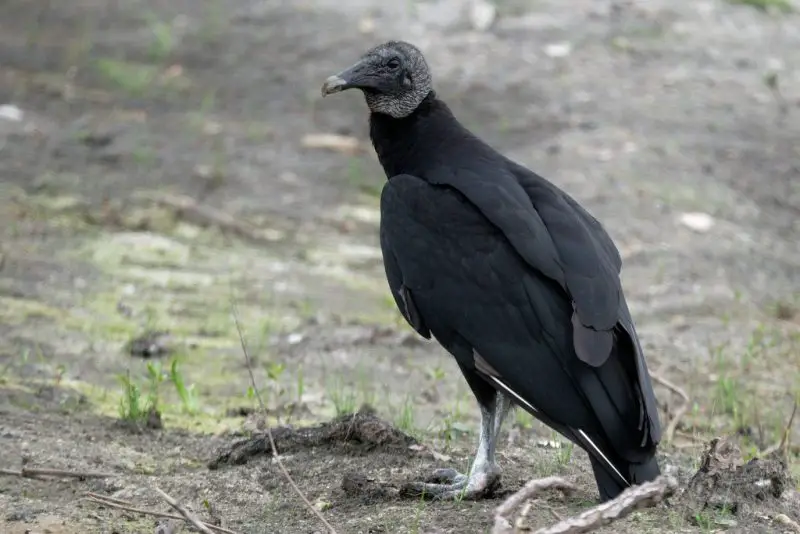
Appearance and Key Identification Features
The Black Vulture (Coragyps atratus) is slightly smaller and more robust than the Turkey Vulture, with a wingspan of roughly five feet. Its plumage is uniformly dark, giving it a sleek, black silhouette. The bare head is gray and wrinkled, lacking feathers, which sets it apart from Turkey Vultures’ red-headed adults. Another distinguishing trait is its short, squared tail, which contrasts with the longer, rounded tail of its larger cousin.
In flight, Black Vultures display a more purposeful, direct style. Unlike Turkey Vultures, which glide effortlessly on thermals, Black Vultures flap their wings more frequently and maintain a steady trajectory. The most recognizable field mark is the bright white patches at the tips of their wings, visible from a distance and providing a sharp contrast with the otherwise black plumage.
Behavior and Feeding Patterns
Black Vultures are opportunistic feeders that rely primarily on sight rather than smell to locate food. They often trail Turkey Vultures, which detect carrion from afar, and then aggressively assert themselves when a carcass is found. This competitive behavior is coupled with strong social tendencies; Black Vultures frequently feed in groups and roost communally at night.
Although carrion is their main food source, these vultures have occasionally been reported preying on weak, sick, or newborn livestock, which can lead to conflicts with farmers. Despite this occasional predation, Black Vultures provide a vital ecological service by consuming dead animals and helping prevent the spread of disease in Ohio’s ecosystems.
Habitat and Distribution in Ohio
Historically confined to the southeastern United States, Black Vultures have steadily expanded northward over recent decades. In Ohio, they are now well established in the southern portion of the state, particularly along the Ohio River Valley, and are increasingly reported in central counties. Sightings in northern Ohio, especially near Lake Erie, are becoming more frequent, suggesting ongoing range expansion.
Their adaptability to diverse habitats, combined with milder winter trends, has facilitated this northward movement. Black Vultures thrive in rural farmlands, open woodlands, river valleys, and even near human structures, where they may forage alongside Turkey Vultures. Warm, sunny days with strong thermals provide the best opportunities for observing these soaring scavengers.
Reproduction and Nesting Behavior
Black Vultures, like other New World vultures, do not build traditional nests. They typically lay their eggs in sheltered locations such as cave floors, hollow stumps, rock crevices, or abandoned buildings. The usual clutch consists of one or two eggs, and both parents participate in incubation and feeding. Hatchlings are altricial, covered in soft down, and rely on regurgitation from adults for nourishment.
Family units are tightly knit, and juveniles often remain with their parents long after fledging. Communal roosts, sometimes hosting dozens of individuals, are common in southern Ohio, particularly in forested river valleys and isolated farmland areas. As the species continues to expand its range, these roosting behaviors may become increasingly familiar to birdwatchers in central Ohio.
Comparing Turkey Vulture and Black Vulture in Ohio
Aspect |
Turkey Vulture (Cathartes aura) |
Black Vulture (Coragyps atratus) |
|---|---|---|
Flight Style |
Glides effortlessly, wings in shallow V, rocks gently on thermals |
Flaps more frequently, flies with direct, steady path, less rocking |
Wing and Tail Features |
Silvery-gray underwing feathers visible in sunlight; long, rounded tail |
Short, square tail; white wingtips provide striking contrast against black plumage |
Head Appearance |
Bright red, featherless in adults; gray in juveniles |
Dark gray, wrinkled, featherless |
Smell vs Sight |
Excellent sense of smell; can detect carcasses hidden under forest canopy |
Poor sense of smell; relies on sight and often follows Turkey Vultures to food |
Social Behavior |
Often seen alone or in small groups; less aggressive |
Highly social; feeds in groups, aggressive at carcasses, roosts communally |
Preferred Habitat in Ohio |
Widespread: farmland, forests, river valleys, suburban areas |
Mainly southern Ohio, gradually expanding north; favors river valleys, farmland, abandoned structures |
Migration & Seasonal Presence |
Arrives March–April; migrates south in late fall |
Partially resident in south; northern individuals may migrate south in winter |
Feeding & Diet |
Carrion only; avoids live prey |
Primarily carrion; occasionally weak livestock; opportunistic |
Breeding & Nesting |
Lays 1–3 eggs in hidden locations like hollow trees or caves; both parents care for young |
Lays 1–2 eggs on ground or sheltered sites; strong parental care; juveniles stay with parents longer |
Best Birdwatching Clues |
Look for wobbly soaring in V-shape with silvery wing undersides |
Look for steady, direct flight with white wing patches and shorter tail |
Ecological Importance of Vultures in Ohio
In Ohio’s ecosystems, both Turkey Vultures (Cathartes aura) and Black Vultures (Coragyps atratus) act as indispensable natural cleaners. By consuming carrion, they remove decaying animals that could otherwise become hotspots for bacteria, viruses, and parasites. Their highly acidic stomachs are capable of neutralizing dangerous pathogens, including anthrax, botulism, and rabies, making them nature’s own sanitizers and helping to protect both wildlife and human communities.
Vultures also play a critical role in nutrient recycling. As they break down carcasses, essential elements such as nitrogen and phosphorus are returned to the soil, supporting plant growth and overall ecosystem productivity. Without their intervention, decaying bodies would linger longer, attracting scavengers that may spread disease or disrupt the local food web.
Furthermore, their presence influences the behavior of other scavengers and predators. By rapidly consuming carrion, vultures reduce competition and limit the proliferation of opportunistic animals that might otherwise dominate the landscape. In this way, they maintain a natural balance, ensuring that energy and nutrients flow efficiently through Ohio’s habitats.
Even though they are sometimes misunderstood or overlooked, vultures are crucial for sustaining healthy ecosystems. Their role extends beyond simply cleaning up dead animals—they are vital guardians of ecological stability and public health, silently performing services that no other wildlife species can replicate as efficiently.
Best Times and Places to Observe Vultures in Ohio
Turkey Vultures are most visible in Ohio from early spring through late fall. As soon as temperatures rise in March, they return from their southern wintering grounds, gradually spreading across the state. By April and May, soaring groups can be seen over farmlands, river valleys, open meadows, and even suburban edges. Highways and rural roads often provide excellent vantage points, as these birds frequently glide above roadside carcasses. Thermals—rising columns of warm air—play a crucial role in their flight, so bright, sunny days with minimal wind offer the best opportunities for observing them gracefully riding the air currents.
Black Vultures, on the other hand, are concentrated in southern Ohio, with prime observation areas including the Ohio River Valley, Hocking Hills, and agricultural landscapes. These vultures are more social and are frequently seen in groups, either perched together at communal roosts or gliding in flocks alongside Turkey Vultures. As their population expands, sightings in central and even northern Ohio are becoming increasingly common, particularly in areas with open fields, forest edges, and abandoned structures where they can perch or nest.
For both species, the most productive times for birdwatching are early morning and late afternoon, when thermals are forming and vultures take advantage of the optimal soaring conditions. Observers with binoculars or cameras can often capture dramatic views of large flocks circling overhead, performing effortless glides and subtle rocking motions that are characteristic of Turkey Vultures, or the more direct, purposeful flight of Black Vultures. Combining patience with an eye toward sunny, thermal-rich periods will yield the most rewarding encounters.
Conclusion
Ohio hosts two fascinating vulture species that are vital components of the state’s ecosystems. The Turkey Vulture remains the most widespread and commonly encountered, gracefully soaring across skies from northern farmlands to southern river valleys. The Black Vulture, once limited to the southern United States, is steadily expanding its range into Ohio, particularly in southern and central counties, and is increasingly observed in northern regions.
Both species perform essential ecological services, cleaning up carrion and reducing the spread of disease. Despite their sometimes negative reputation, these scavengers are indispensable for maintaining a balanced environment and healthy ecosystems.
For residents, photographers, and wildlife enthusiasts, learning to identify and appreciate Ohio’s vultures opens a window into a unique aspect of the natural world. Observing these birds—whether the wobbly, soaring Turkey Vultures or the bold, social Black Vultures—reveals their importance, elegance, and crucial role in keeping the landscape clean. Next time you spot a large, dark bird gliding overhead, you’ll know exactly which species it is and why it deserves respect and admiration.
FAQs about Vultures in Ohio
Do vultures migrate through Ohio, or are they year-round residents?
Turkey Vultures remain in Ohio for much of the year, though many head south once winter sets in. Black Vultures, on the other hand, are more restricted to southern Ohio and can sometimes stay even in colder months.
How do I tell a Turkey Vulture from a Black Vulture while birdwatching?
The best clue is in flight: Turkey Vultures hold their wings in a shallow “V” and wobble slightly, while Black Vultures flap more often and glide with flatter wings. Head color is also a giveaway—red for Turkey, gray for Black.
Are vultures beneficial to Ohio’s environment?
Yes. Despite their grim reputation, vultures are nature’s cleanup crew. They remove decaying carcasses that could otherwise spread disease to wildlife, livestock, and even humans.
Can vultures be dangerous to people or pets?
Generally, vultures are not a direct threat. They don’t hunt live animals, but large groups near farms can sometimes damage property like roof shingles or plastic coverings.
Where is the best place to spot vultures in Ohio?
Open farmland, wooded edges, and river valleys are hotspots. You’ll often see them circling over highways too, where roadkill provides a reliable food source.

